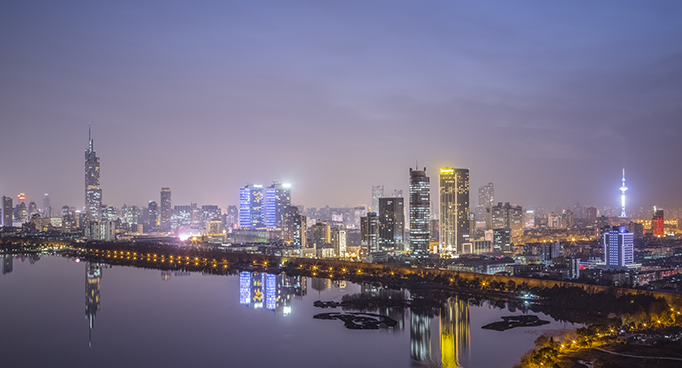
Nanjing, once the capital of China and now the capital of Jiangsu province, is defined by the central government as one of the second-tier cities, after the Beijing, Guangzhou, Shanghai and Shenzhen megalopolises. But the city is now poised to get a little respect — in the form of some attention from global retailers. Arguably, there are good reasons for such respect and attention.
Nanjing has a population of 8.2 million and boasts a total retail footprint of 2.1 million square metres (nearly 23 million square feet), according to research from Savills. This is hardly insignificant: Higher-tier Shenzhen boasts only 200,000 square metres more. And as of last year, Nanjing is among China’s top 10 in average personal salary terms, at 5,278 yuan (about €690) per month. Though this is 13 per cent below the 6,070 yuan national average, McKinsey researchers have looked at expected increases in per capita income and cite Nanjing as one of 32 cities worldwide that could account for roughly one-quarter of total urban consumption growth through 2030.
The Xinjiekou neighbourhood has been Nanjing’s premium retail destination since the 1930s, and shoppers from neighbouring provinces take weekend trips to visit its department stores. Three years ago Danish jewellery retailer Pandora opened its first store in Nanjing. American Eagle Outfitters and Italian fashion house Trussardi both followed. In the past year, local stakeholders have been accelerating development in the retail sector by turning to important foreign brands.
House of Fraser has come a long way since its 1849 founding in Glasgow, Scotland, as a small drapery shop to become the third largest department-store group in the UK, with some 60 units in the UK and Ireland. Three years ago House of Fraser sold an 89 per cent stake, valued at £480 million, to Sanpower Group, a Nanjing-based conglomerate that holds controlling stakes in roughly 100 subsidiaries across the finance, retail, information services, media, health care, real estate and entertainment sectors. Last December House of Fraser inaugurated its first outpost in China. After a delay of nearly a year, the 40,000-square-metre Nanjing store finally opened, to no little fanfare, and two beefeater statues placed inside the store generated plenty of buzz on social media.
Sanpower and House of Fraser plan to open a second Chinese store, in Xuzhou, north of Nanjing, in the third quarter of this year. Negotiations for yet a third store, in Chongqing, the nation’s biggest inland city, are under way. Neither city is known as a premier shopping destination, but with the likes of Beijing, Shanghai and Hong Kong already overcrowded with retail options, the second-tier cities become the natural choices for expansion.
Business is picking up again in the People’s Republic for high-end brands, which had to endure a bumpy ride for several years owing to a cool economy and governmental promotion of frugality. Chinese consumers are back in the swing of things now, though, and they are eager to go beyond the usual luxury brands that typically dominate shopping destinations worldwide. House of Fraser has brought some new British brands to the Chinese market, including The Cambridge Satchel Company, low-key menswear label Peter Werth and women’s accessory brand Radley.
There is more. Brookstone — the US purveyor of memory foam pillows, gadget accessories and kinetic sand that filed for bankruptcy three years ago — opened its first overseas store in January 2016 in Nanjing, where its products were fresh for the Chinese shopper. Brookstone, which is another of Sanpower’s subsidiaries, has since opened three more stores, in Beijing and Shanghai.
Hamleys, the world’s oldest and largest toy shop, also chose Nanjing as its China landing point. Last October Hamleys opened its first China flagship there, occupying nearly 7,000 square metres, in Xinjiekou Sanpower Plaza. C.banner, a Nanjing-based conglomerate led by Chinese businessman Chen Yixi, brother-in-law of billionaire Yuan Yafei, who is chairman of Sanpower, has purchased the company. With such retail giants so forcefully advancing their plans to transform the retail landscape in second-tier Chinese cities, shoppers there are having the world brought to them.
Looking ahead, McKinsey indicates that 20 per cent of Nanjing’s population will be over the age of 65 by 2020. Naturally, this suggests an increase in the need for health care services, and Sanpower has already acquired medical care providers to meet this anticipated demand. Thus, thanks to forward-thinking developers like Yuan and Chen, China’s second-tier cities are now poised to begin offering some exciting alternatives to the better-known shopping destinations.
By Brady Ng
Contributor, Shopping Centers Today